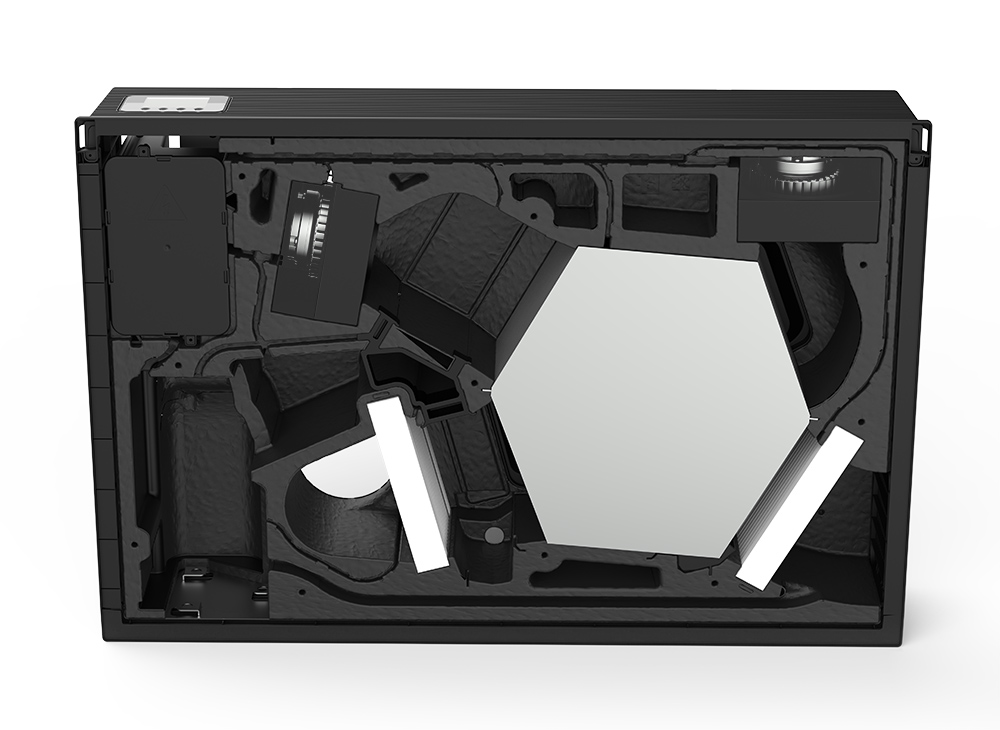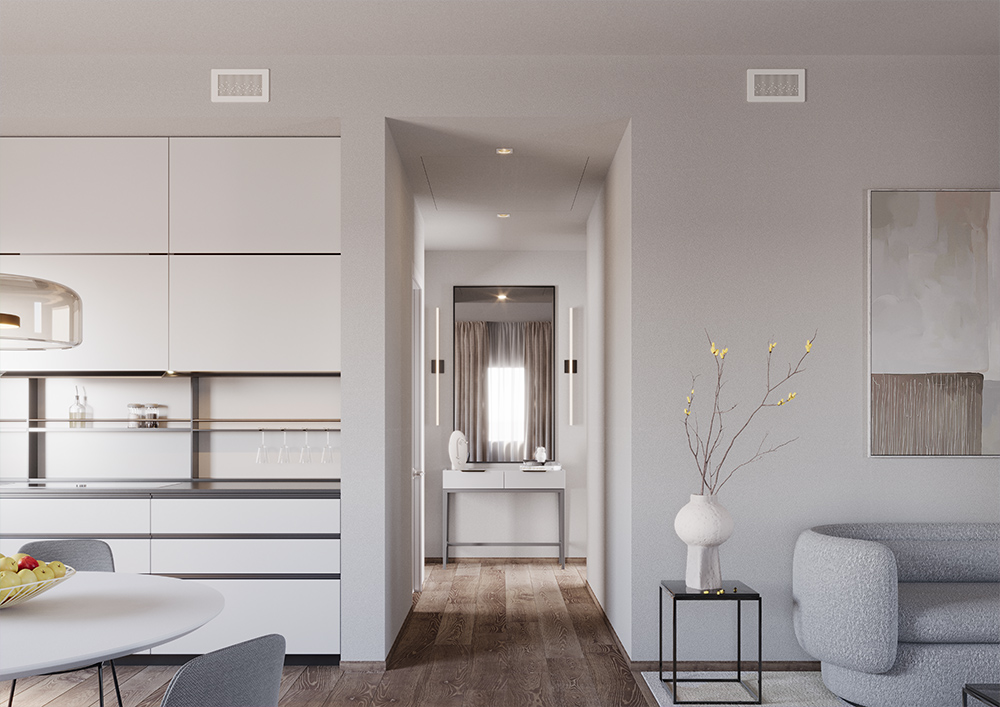In recent years there has been increasing talk of Heat Recovery Ventilation (HRV) systems, which guarantee a constant exchange of air in closed environments without the need to open windows. The growing attention to indoor air quality and the evolution of modern construction have made these systems an increasingly popular solution for improving living comfort and the healthiness of indoor environments.
Breathing clean air inside the home is essential, especially considering that we spend up to 90% of our time indoors. Indoor air can be up to 20 times more polluted than outdoor air, due to substances emitted by furniture, cleaning products, building materials and normal daily activities such as cooking or taking a shower. HRV helps eliminate these pollutants, maintaining a healthy and comfortable environment.

HRV: what the system consists of
Heat Recovery Ventilation is a system designed to guarantee a continuous and controlled exchange of air in closed environments. Through an extraction and intake mechanism, HRV replaces stale air with new, filtered air, improving indoor air quality without causing heat loss.
The importance of a controlled ventilation system is particularly evident in modern, energy-efficient buildings, where thermal insulation reduces draughts and limits natural air exchange. Without adequate ventilation, humidity tends to accumulate, favouring the formation of mould and condensation, which are harmful both to health and to the structure of the building. How HRV works
The HRV works by means of an automated ventilation system that extracts indoor air and introduces fresh air, ensuring a healthier and more comfortable environment. This process takes place in three main phases:
- Extraction of stale air: the internal air, full of CO2, humidity and pollutants, is extracted and conveyed outside
- Incoming air filtration: the air taken from outside passes through high-efficiency filters that remove fine particles, pollen and other pollutants
- Introduction of new, clean air: the filtered air is introduced into the rooms, guaranteeing a constant supply of oxygen without heat loss
A key element of the HRV is the heat recovery unit, which allows about 90% of the thermal energy from the outgoing air to be transferred to the incoming air. This allows a comfortable internal temperature to be maintained, reducing energy consumption for heating in winter and cooling in summer.
Attention to indoor air quality and the evolution of modern construction have made HRV an increasingly popular solution for improving living comfort and environmental health.
Benefits of HRV
Installing a Heat Recovery Ventilation system has numerous advantages, and improves the healthiness of the environment and the energy efficiency of the building.
- Air quality: filtration eliminates allergens, fine particles and volatile organic compounds (VOCs), reducing the risk of allergies and respiratory problems
- Humidity control: by avoiding the accumulation of humidity, HRV prevents the formation of mould and condensation, contributing to a healthier environment
- Comfortable living: HRV guarantees constant air circulation, eliminating bad odours and maintaining an adequate level of oxygenation
- Energy efficiency: thanks to the heat recovery unit, heat loss is avoided, reducing heating and air conditioning consumption

HRV in the context of modern homes
With the evolution of energy efficiency regulations, HRV is becoming an essential element in new constructions and renovations. Modern buildings are designed to minimise heat loss, but this feature also limits the natural exchange of air. Without an adequate ventilation system, indoor air can become stagnant and full of pollutants.
Furthermore, HRV not only improves the liveability of rooms, but also protects the value of the property over time. A home equipped with an efficient ventilation system is more attractive on the property market, thanks to the benefits in terms of comfort and energy savings.

Heat Recovery Ventilation systems are an innovative and indispensable solution for guaranteeing clean air, reducing humidity and improving the energy efficiency of modern homes. Constant air exchange is not just a question of comfort, but a real investment in health and well-being.
In an age when indoor air quality is increasingly at risk, installing an HRV system means choosing a conscious and sustainable approach to improving your daily life and that of your family.
HRV: FREQUENTLY ASKED QUESTIONS
Let's now try to answer a short series of frequently asked questions about heat recovery ventilation systems:
1. Does HRV replace the use of an air conditioner?
No, HRV does not cool or heat the air, but it helps to maintain the internal temperature by reducing energy dispersion thanks to the heat recovery unit.
2. Does HRV consume a lot of energy?
No, the energy consumption of an HRV system is very low, comparable to that of an LED light bulb.
3. How often should the HRV filters be changed?
Generally every 6-12 months, depending on the model and the level of outdoor air pollution.
4. Does the HRV make any noise?
No. The models in the Ariosa range are designed to be extremely quiet, with minimal sound levels that won't disturb your rest.
5. Can the HRV be installed in an existing home?
Yes, there are solutions, such as Ariosa DOT, Ariosa DOTmini and Brezza60 that do not require invasive interventions and can be installed in a few hours even in buildings that are already inhabited.
 Italiano
Italiano
 English
English
 Deutsch
Deutsch
 Français
Français
 Español
Español
 Greek
Greek